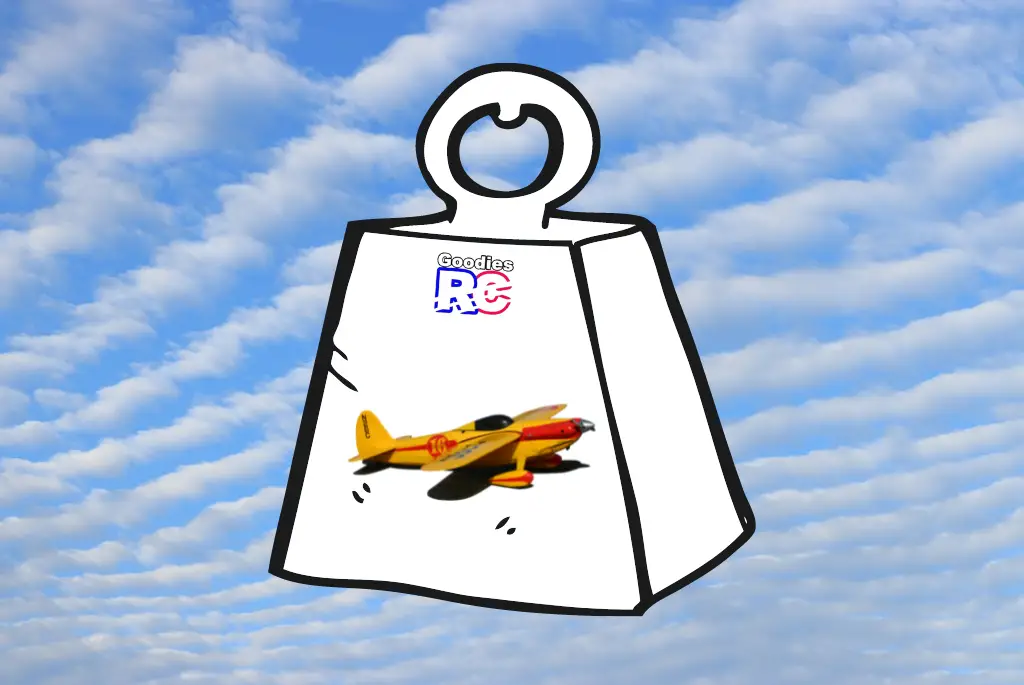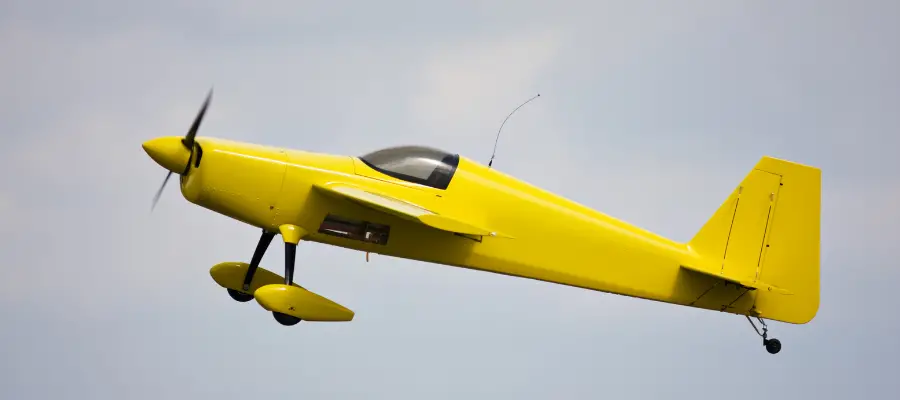The weight of an RC plane is a vital aspect of the craft. The weight must be perfectly balanced with the thrust and lift capabilities of the plane for it to function well. However, understanding the principles and properties of weight in RC planes is a challenge. This is the ultimate guide to RC plane weight.
The weight of an RC plane is vital. The weight determines the thrust required to keep the plane airborne. More weight requires more thrust, which adds more weight. Lightness is key for RC planes, but not enough weight can also be problematic. There is a lower and upper limit to RC plane weight.
Understanding the significance of the weight of RC planes and how to use them to the advantage of the craft is what sets great RC pilots apart from regular RC pilots. Let’s take the time to understand the most important aspects of RC plane weight and how it affects RC planes.

How Important Is RC Plane Weight?
The weight of an RC plane is critical. If the plane is too heavy, it simply will not be able to fly. RC plane motors have a limited thrust output, which means that the plane cannot weigh more than the thrust output of the motors are capable of lifting.
More weight requires more thrust to get off the ground. The less weight, the less thrust required, which is why RC planes are typically built to be as light as possible, maximizing the flying time of the craft and using the motors as efficiently as possible. Interested to know the carrying capacity of RC planes? Check out this detailed guide where I explain how much weight an RC plane can carry.
If an RC plane is too light, it may not be stable in the air and will be easily manipulated by light winds. For this reason, an RC plane must not be too light.
The perfect balance of weight, thrust, and lift must be achieved for an RC plane to function well. The weight is the most limiting factor in this equation, which means that the weight of an RC plane is one of the most important aspects of the aircraft.
Without the perfect weight for the available thrust and lift provided by the RC motors, the plane will not fly at all or not fly well, depending on the weight of the plane.
How Heavy Should An RC Plane Be?
The weight of an RC plane is variable, and there is no optimum weight for an RC plane. How heavy an RC plane should be is determined by the power in Watts that the planes’ engine is capable of producing.
This requires an RC plane to have a motor that is proportionate to the weight of the craft. An RC plane requires a minimum of 50W of power for every pound of weight to at least get off the ground. The more power the RC plane’s engine produces, the heavier the plane can be and still achieve successful flight.
Most basic RC airplanes weigh between 2.5lbs and 3.5lbs, but this is not an upper or lower weight limit. So long as the plane’s engine has enough power to lift the weight of the craft into the air and thrust it forward, there is almost no limit to how heavy an RC plane can be.
The fastest RC planes have 180W – 200W of power per pound, allowing them to achieve incredible flight speeds, and the slowest and most basic planes typically have 50W – 80W of power per pound, which requires them to be very light to get off the ground.
How To Tell If An RC Plane Is Too Heavy

RC plane weight is all about balance and efficiency. If the plane is too heavy in one section, it will handle badly and be difficult to fly and land, if the plane is too heavy overall, it will not be efficient and flight times will be short, and if the plane is too light, it will not fly well in windy weather.
An RC plane that is too heavy at the nose will be less efficient and have reduced flight times. To learn more, check out this guide about symptoms and solutions for nose heavy RC planes. It will also feel sluggish to fly, and landing is tricky.
On the other hand, an RC plane that is tail heavy will feel twitchy in the air. Overall, the heaviness will make it difficult for the plane to take off.
The weight of an RC plane is important, but how the weight is balanced is also vital. If the plane is too heavy in the front, the plane will feel heavy and sluggish in the air.
If the plane is too heavy at the tail, it will feel twitchy and sporadic in the air, making it a real challenge to control and fly well. These factors make a tail-heavy plane very challenging to land safely as well.
Please check out my detailed guide explaining RC plane tail heavy symptoms. It covers all the causes and how to fix them.
Another way to tell if the plane is too heavy overall is if the plane has difficulty taking off. If the RC plane is too heavy for the thrust provided by the engine of the craft, it may not even leave the ground successfully.
How To Make An RC Plane Lighter
We have established that the weight of an RC plane is vital for a successful and controllable flight, but what if your RC plane is too heavy? Is there a way to make the plane lighter?
To make an RC plane lighter, use motors, batteries, propellers, props, servos, wheels, and receivers that are as light as possible. Body panels and wings can be replaced with lighter materials such as lightweight balsa wood or carbon fiber.
Other methods of making RC planes lighter include cutting weight-reducing holes in the plane’s fuselage to reduce weight and replacing structural rods with strong yet lightweight materials such as carbon fiber.
Using lightweight adhesives such as CA glue rather than epoxy is another way to save weight. When epoxy combines and hardens, it becomes much heavier than the base components.
Only a few components of RC planes require significant strength; these include landing gear and landing gear mounts, the firewall, and the wing saddle. The rest of the plane should be built to be as light as possible, with components that are as light as possible.
How To Add Weight To An RC Plane
The weight of an RC plane is important, especially getting the balance and distribution of the weight of the craft right. In some cases, this may require the RC pilot adding some weight to the aircraft. Too little overall weight or too little weight in one area of an RC plane can be detrimental to flight handling and control. How do you add more weight to an RC plane?
There are several ways to add weight to an RC plane. One of the best ways is to add an extra battery back. Adding an extra battery adds weight that is useful for the plane. An extra battery can extend the flying time of the aircraft while adding the required additional weight.
(Amazon link)
Other options include using weighted prop nuts and washers and even installing small weights in the plane.
Adding more weight to strategic locations of an RC plane can significantly increase the maneuverability of the craft and make the plane easier to handle in the air and during take-off and landing.
However, adding weight must be done very carefully, and the thrust-to-weight balance of the plane must be adjusted according to the increase in weight. If the weight is added incorrectly, if it is not properly balanced, or if too much weight is added, it may ruin the aircraft altogether by causing a serious crash.
What Is The Power-Weight Ratio Of RC Planes?
The power to weight ratio of radio-controlled planes varies depending on the plane itself. The weight determines how much power, or thrust, is required to lift the aircraft off the ground and to fly comfortably.
The power to weight ratio is typically expressed as a ratio such as 0.5:1, which means the thrust value must be half the weight value of the aircraft. If the power to weight ratio is 0.3:1, it means the power value of the motor can be 1/3 the weight of the aircraft.
To establish the power of the motor required for a specific weight, we can look at an example.
If you have a trainer plane that has a power-weight ratio of 0.6:1, and your plane weighs 1.2kg or 2.6lbs, you can calculate the power of the engine required as follows.
1.2kg X 0.6 = 720g
Or
2.6lbs X 0.6 = 1.56lbs
Thus, the engine would need to have a thrust value of 720g or 1.56lbs to fly the aircraft effectively.
The power to weight ratio of gliders and slow-flying models can be as low as 0.3:1. Trainer planes typically use a ratio of between 0.5:1 to 0.8:1, and fast-flying jets use a ratio of 0.8:1 or higher because they must fly fast to maintain flight.
The thrust-to-weight ratio is only one determining factor in the flight success of a plane, but it is a vital component of a successful and comfortable RC plane flight.
For a more detailed guide, check out my article:
My Guide To Thrust To Weight Ratio For RC Planes
A lower thrust-weight ratio is good for gliders because the larger wingspan of these crafts do not allow them to travel quickly and requires less lift to keep the plane in the air. Slow-flying craft do not need high thrust-weight ratios because they do not need to move quickly to achieve lift.
Fast-flying jets require much more power for their weight, as these aircraft require high flight speeds to remain airborne due to their design. This ratio is easily calculable per RC craft, and determining the ideal power-weight ratio for any craft is simply done by multiplying the weight of the craft by the desired ratio.
This will provide a figure for how powerful the RC engine must be according to the weight of the craft to achieve the desired power to weight ratio.
What Is The Lightest RC Plane?

The weight of an RC aircraft is very important, especially so on RC planes, but is there a lower limit to how much an RC plane can weigh? What is the most lightweight RC plane?
The lightest RC plane ever built only weighs 1.98 grams (0.07 ounces). This is also the smallest RC plane and has a tiny size of 69mm (2.7 inches). Typical ultralight indoor RC planes weigh less than 170 grams (6 ounces). The lightest outdoor planes weigh around 180 grams (6.3 ounces).
The truth is that there are some incredibly lightweight RC planes that are also very small. These planes are only a few centimeters in length and weigh mere grams, but many RC pilots and enthusiasts do not consider these to be true RC planes but rather an exercise in engineering.
Check out this post: Is Your RC Plane Going Backwards? Read This Cool Guide
The trouble with very lightweight planes is that they are not suitable for all environments, and they are not able to reach very high speeds. Most lightweight RC planes must be flown indoors, or the wind outside will render them unable to remain airborne.
The most lightweight outdoor planes can only be flown on windless days and must be heavy enough to fly at speeds fast enough to cut through any wind that does occur.
Indoor RC planes can be very light, but the lighter the plane, the slower it is because lightweight motors and batteries are not very powerful. The lightweight batteries used for these crafts do not provide very long flight times either, as they have a very low capacity.
What Is The Heaviest RC Plane?
The weight of an RC plane is critical for how well the plane performs, how well it flies, flight duration, stability, and ultimately how well the plane can take off. We have also learned that a plane can be as heavy as the creator wants it to be so long as there is enough thrust to lift the plane off the ground. This raises the question, what is the heaviest RC plane ever built?
The heaviest RC plane is a 1:6 scale replica of a Concorde jet that weighs 149kg (328.5lb). This RC plane has a wingspan of 4 meters (over 13 feet), is 10 meters (32.8ft) long, 1.85 meters high (over 6ft), carries 24 liters of fuel, and is powered by four JetCat P300 Pro turbines.
The turbines used for thrust and lift on this Concorde model each generate 900W of power, which is more than enough to lift this plane from the ground. Many RC fans are somewhat surprised by how well this craft flies and handles.
Check out my article: How Big Can An RC Plane Be?
The pilot of the craft reports that flying this model Concorde is similar to flying an RC fighter jet, as the plane handles very similarly.
Enthusiasts note that this plane is very realistic and handles proportionately to how the real Concorde would, especially regarding take-off and landing.
Conclusion
The weight of radio-controlled planes is vital to the overall performance of the craft, including how well it flies, how well it handles in the air, how long it remains airborne, landing and take-off capabilities, and even how much power the plane requires.
Too much weight is a problem, as is too little weight, but neither of these is as important as weight balance. If the weight of the craft is improperly balanced, the plane will not fly successfully.
Take the time to understand the weight and weight requirements of your RC planes to determine the best power-to-weight ratio and where to add or remove weight to provide the perfect balance and optimum flight capabilities of the plane.

